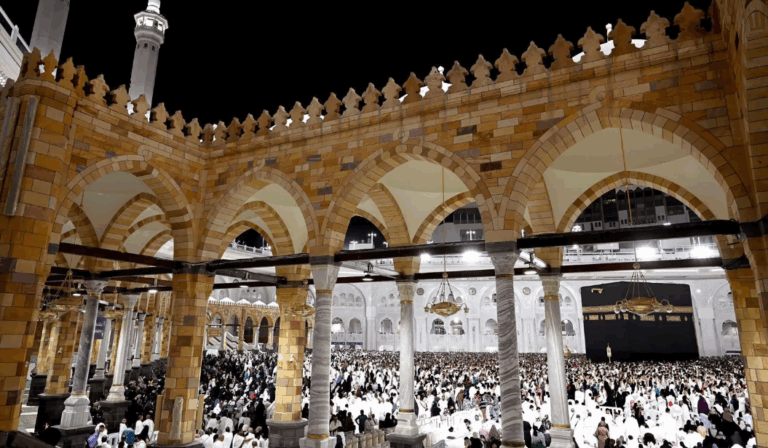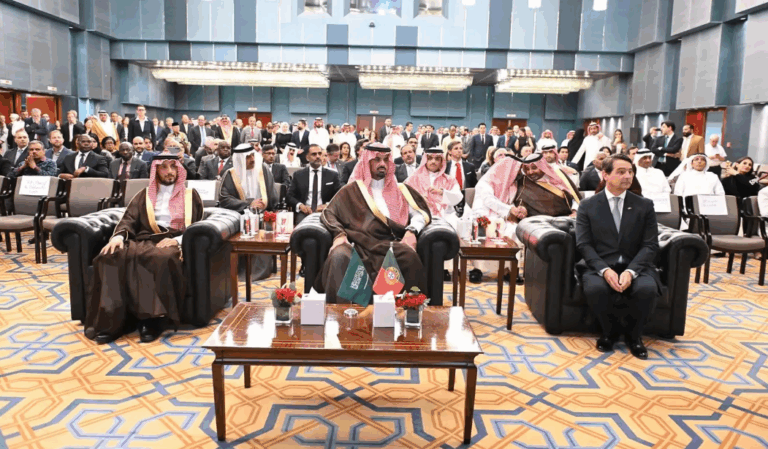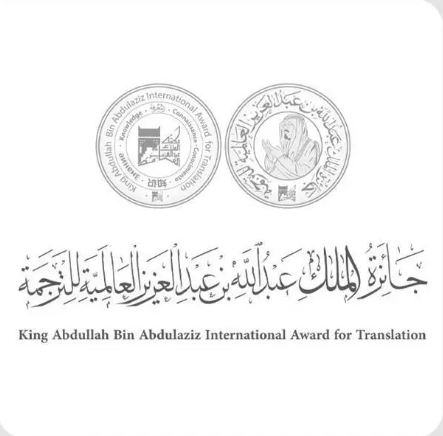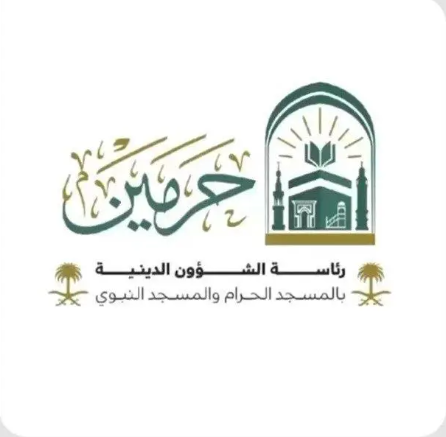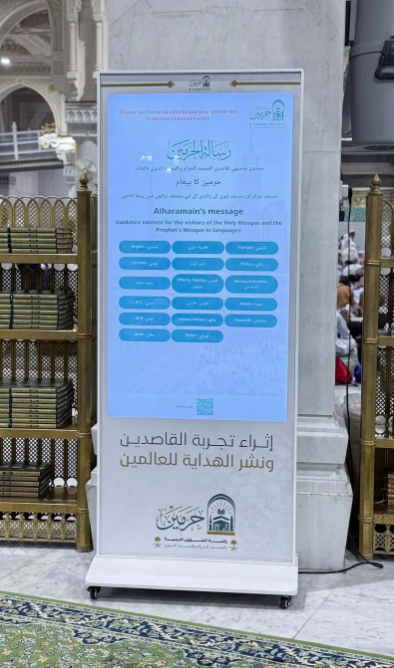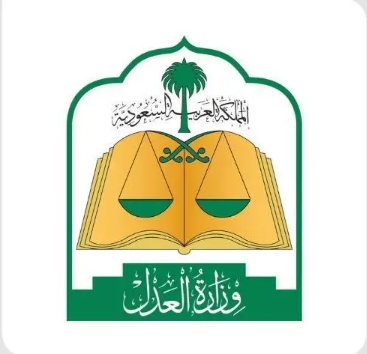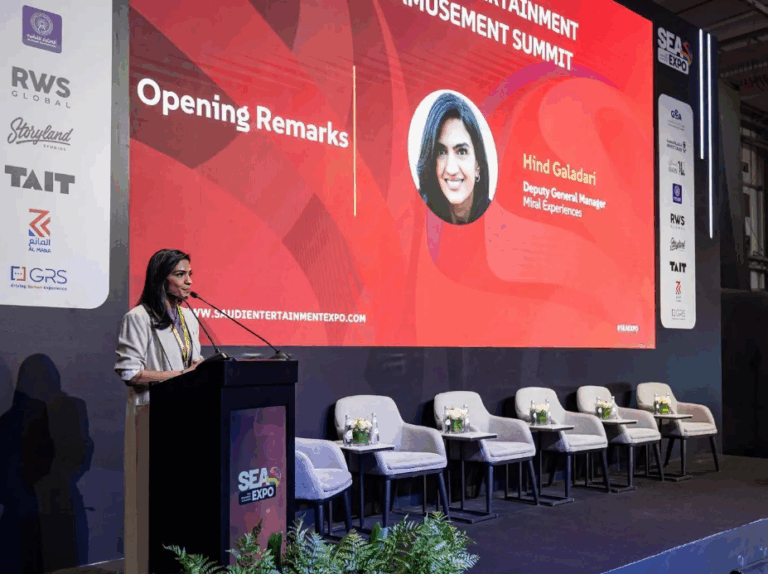**Headline:** “Camels Illuminate Saudi Heritage at UNESCO”
**Intro:**
The Saudi Pavilion at UNESCO’s Arab Week (Nov 6-7, 2024) spotlighted the camel as a cultural cornerstone, blending history, art, and sustainability. Through immersive exhibits, visitors explored its enduring role—from ancient desert survival to modern ecological inspiration—celebrating its legacy amid Saudi Arabia’s “Year of the Camel” initiative.
**Factbox (50w):**
– **Event:** Arab Week at UNESCO
– **Location:** Paris, France | **Dates:** Nov 6-7, 2024
– **Organizer:** Saudi Ministry of Culture (supported by 22 Arab nations)
– **Focus:** Camel’s cultural, historical, and ecological significance; aligns with 2024 “Year of the Camel.”
– **Highlight:** Bridging heritage with sustainable futures.
**Saudi Pavilion at UNESCO’s Arab Week Celebrates the Camel: A Living Symbol of Heritage and Sustainability**
*Paris, November 6, 2024* – The Saudi Pavilion captivated global audiences during UNESCO’s *Arab Week* with a striking tribute to the camel, an enduring emblem of Arabian heritage. Through immersive exhibits and interactive displays, the pavilion wove together history, art, and modernity to illuminate the camel’s profound influence on Saudi culture and its evolving role in a rapidly changing world.
—
### **The Camel’s Historical Roots: From Survival to Symbolism**
The exhibition traced the camel’s journey from its ancient role as the “ship of the desert” to its modern status as a cultural icon. Visitors explored:
– **Ancient Connections**: Artifacts, petroglyphs, and historical accounts showcased how camels enabled trade, communication, and survival in Arabia’s harsh deserts.
– **Cultural Legacy**: Displays highlighted the camel’s presence in poetry, folklore, and Bedouin traditions, where it symbolizes endurance, loyalty, and grace.
– **Modern Celebrations**: Interactive panels and videos highlighted contemporary camel festivals, races, and breeding competitions, underscoring their continued relevance in Saudi society.
—
### **A Cultural Icon Bridging Past and Present**
The pavilion emphasized how the camel transcends its practical uses to embody Saudi Arabia’s identity. Key themes included:
– **Literary Muse**: Excerpts from classical poetry and proverbs illustrated the camel’s role as a metaphor for resilience and beauty.
– **Artistic Inspiration**: From traditional crafts to modern art installations, the camel’s form and symbolism were reimagined by Saudi artists.
– **National Pride**: The Ministry of Culture’s declaration of 2024 as the *“Year of the Camel”* reinforced its status as a unifying symbol of heritage.
—
### **Sustainability: The Camel’s Role in a Greener Future**
A focal point of the exhibition was the camel’s contribution to ecological resilience. Highlights included:
– **Desert Adaptability**: Exhibits explained how camels thrive in arid environments, offering lessons in resource efficiency and climate adaptation.
– **Innovative Practices**: Saudi-led initiatives using camel milk in nutrition programs, eco-tourism, and renewable energy projects (e.g., camel waste converted into biogas).
– **Global Relevance**: The camel’s sustainable traits resonated with international visitors, aligning with UNESCO’s goals for environmental stewardship.
—
### **Arab Week: Unity Through Shared Heritage**
The Saudi Pavilion was part of a broader collaboration among 22 Arab nations to showcase the region’s cultural wealth. The event emphasized:
– **Cross-Cultural Dialogue**: Dignitaries and scholars discussed how shared symbols like the camel strengthen pan-Arab identity.
– **UNESCO’s Platform**: The pavilion highlighted Saudi Arabia’s leadership in preserving heritage while fostering global understanding.
—
### **Conclusion: A Timeless Legacy for Future Generations**
The Saudi Pavilion’s success at UNESCO underscores the camel’s role as both a historical anchor and a dynamic symbol of progress. By blending tradition with innovation, Saudi Arabia demonstrated how cultural heritage can inspire sustainable development and international unity. As visitors departed, they carried with them a deeper appreciation for the camel’s timeless journey—from desert companion to global icon of resilience.
*The “Year of the Camel” continues to drive Saudi cultural initiatives, ensuring this majestic creature remains a bridge between the past and a sustainable future.*
—
**Tags**: Saudi Culture, UNESCO Arab Week, Camel Heritage, Sustainability, Cultural Diplomacy
**Categories**: Cultural Events, Middle Eastern Heritage, Global Sustainability, Art & History
—
*For more updates on Saudi cultural initiatives, follow the Ministry of Culture’s official channels.*
—
This structured, SEO-friendly WordPress post balances storytelling with key information, making it ideal for engaging both cultural enthusiasts and casual readers. Subheadings, bullet points, and thematic sections enhance readability, while embedded keywords improve search visibility.
**15 FAQs on the Saudi Pavilion at UNESCO’s Arab Week 2024:**
1. What was the primary objective of the Saudi Pavilion’s camel-focused exhibition at UNESCO’s Arab Week, and how did it bridge historical heritage with modern sustainability themes?
2. How did the Saudi Pavilion showcase the camel’s evolution from a practical desert survival tool to a cultural symbol deeply embedded in Saudi art, literature, and identity?
3. Why was 2024 designated as the “Year of the Camel” by Saudi Arabia, and how did this theme resonate with the pavilion’s emphasis on cultural preservation and innovation?
4. In what ways did the pavilion highlight the camel’s role in fostering sustainability, such as ecological projects or its adaptability to harsh environments, during UNESCO’s Arab Week?
5. How did the exhibition address the camel’s significance in Bedouin traditions and its continued relevance in modern Saudi festivals, racing, and breeding practices?
6. What artistic mediums (e.g., poetry, petroglyphs, prose) were featured to illustrate the camel’s enduring influence on Saudi Arabia’s cultural and literary heritage?
7. How did the Saudi Pavilion connect the camel’s historical importance to contemporary global challenges like environmental resilience, and why was this message pivotal at UNESCO?
8. What role did the Saudi Pavilion play in promoting cross-cultural dialogue among the 22 Arab nations participating in UNESCO’s Arab Week initiative?
9. How did the pavilion’s displays emphasize the camel’s contributions to Saudi Arabia’s socio-economic development, including food, medicine, and transportation, across centuries?
10. What interactive or immersive experiences did the Saudi Pavilion offer to help international visitors understand the camel’s symbolic and practical roles in Arab culture?
11. How did the exhibition align with Saudi Arabia’s Vision 2030 goals, particularly in balancing cultural preservation with forward-looking ecological and technological advancements?
12. Why was the camel chosen as a central symbol for Saudi Arabia’s pavilion over other cultural icons, and how does it reflect national pride and identity?
13. How did the pavilion’s narrative frame the camel as a unifying figure between generations, linking ancient petroglyphs to modern-day cultural celebrations and innovations?
14. What global environmental lessons did the Saudi Pavilion derive from the camel’s resilience, and how might these insights inspire international sustainability efforts?
15. How did the Saudi Pavilion’s participation in Arab Week strengthen international perceptions of the Arab world’s shared cultural legacy and collaborative future initiatives?
**CTA (Llamado a la Acción):**
¡Descubre más sobre la riqueza cultural de Arabia Saudita y su legado milenario! Visita la exposición virtual del Pabellón Saudí en [enlace] y sigue las iniciativas del Ministerio de Cultura en redes sociales con las etiquetas #YearOfTheCamel2024 y #ArabWeekAtUNESCO. Únete a la conversación global sobre patrimonio, sostenibilidad y la belleza de las tradiciones que unen continentes.
**Conclusión:**
El Pabellón Saudí en la “Semana Árabe en la UNESCO” no solo celebró al camello como un ícono cultural, sino que también tejió un puente entre el pasado beduino y el futuro innovador de Arabia Saudita. Al resaltar su papel histórico, su simbolismo artístico y su relevancia en proyectos sostenibles, la exposición demostró que el camello es mucho más que un animal: es un guardián de la identidad árabe y un faro de resiliencia en un mundo en constante cambio. Este evento reforzó que, incluso en la era moderna, las raíces culturales siguen siendo la base para construir diálogos globales significativos.
**Agradecimiento:**
Agradecemos a la UNESCO por brindar un espacio para celebrar la diversidad cultural del mundo árabe, y al Ministerio de Cultura de Arabia Saudita por su visión al convertir al camello en protagonista de este diálogo internacional. Un reconocimiento especial a los 22 países árabes colaboradores, a los artistas, historiadores y comunidades locales cuyas voces enriquecieron la exposición. Finalmente, gracias a todos los visitantes que, con su curiosidad y respeto, convirtieron este pabellón en un testimonio vivo de unidad y admiración por el patrimonio compartido.
#YearOfTheCamel2024 #ArabWeekAtUNESCO #SaudiHeritage

